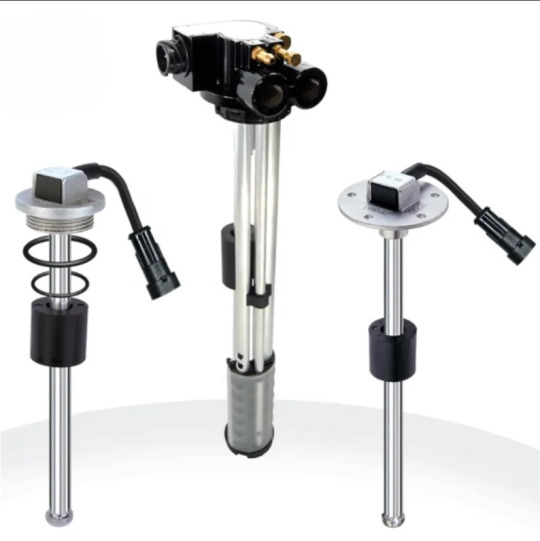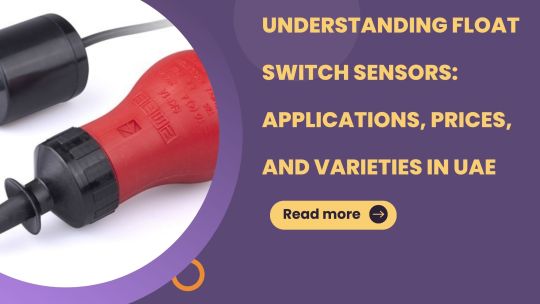#Fuel Level Sensors
Explore tagged Tumblr posts
Text
UNI-TECH Automation Pvt. Ltd.-Top Control Panel Suppliers in Pune Find top control panel suppliers in Pune, offering high-quality, custom-built electrical control panels for industrial, commercial, and residential applications.

0 notes
Text
How Fuel Level Sensors Improve Fuel Management in Vehicles
Fuel level sensors are cutting-edge technological devices designed to accurately measure and monitor the level of fuel in a vehicle's tank. Fuel management is an integral part of vehicle operation and maintenance. In this post, you'll read how fuel level sensors improve fuel management in vehicles.
0 notes
Text

The working theory of the capacitance level sensor(CLS) uses capacitance that is created by liquid that fill in the positive and negative probe. With the change of the liquid level, the change of the capacitance will be converted to standard electrical output signal, The main component is the highly-integrated capacitance chips, by the exact temperature compensation and linear correction, the sensor has the advantage of high accuracy, high stability and continuous measurement.
4 notes
·
View notes
Text
#pv clean mobility technologies#electric vehicle component manufacturers in india#bldc pump manufacturer in india#fuel level sensor#auto parts manufacturer#automobile component manufacturer
0 notes
Text
Genset Electronic Controller and Sensors provider
UNI-TECH Automation Pvt. Ltd specializes in providing high-quality Genset Electronic Controller & Sensors, ensuring reliable performance and efficiency for your power generation needs.

#UL & CSA approved Cables India#Control Panel Suppliers Pune#Wiring harness manufacturer Pune#Sheet metal fabrication & Powder coating#Genset Electronic Controller & Sensors#Capacitive Fuel level sensors
0 notes
Text
"Indication Instruments Limited provides high-quality gauges for construction equipment, ensuring precise performance monitoring. Built for durability in rugged environments, our gauges deliver accurate readings for critical parameters, enhancing safety and efficiency on-site. Trusted solutions for superior operational control."
#Construction Equipment Gauges#Construction Equipment fuel level sensors#Construction Equipment Displays#Compressor Displays#Tractor fuel level sensor
0 notes
Text
Fuel level sensor supplier, Manufacturer, Exporter, Dealer in Philippines, Cambodia, Bangladesh, myanmar, Africa, Egypt, Ethiopia, Iran, Iraq, Kenya, Tanzania, Nigeria, sri lanka, Thailand, south America, Argentina, Bolivia, Brazil, Colombia, Peru

Jaycee tech is the best Fuel level sensor supplier, Manufacturer, Exporter, Dealer in Philippines, Cambodia, Bangladesh, myanmar, Africa, Egypt, Ethiopia, Iran, Iraq, Kenya, Tanzania, Nigeria, sri lanka, Thailand, south America, Argentina, Bolivia, Brazil, Colombia, Peru
#Fuel level sensor#Fuel level sensor supplier#Fuel level sensor Manufacturer#Fuel level sensor Exporter#Fuel level sensor Dealer#Philippines#Cambodia#Bangladesh#myanmar#Africa#Egypt#Ethiopia#Iran#Iraq#Kenya#Tanzania#Nigeria#sri lanka#Thailand#south America#Argentina#Bolivia#Brazil#Colombia#Peru
0 notes
Text
Understanding Float Switch Sensors: Applications, Prices, and Varieties in UAE

Float switch sensors are critical components used in various industries and applications to monitor liquid levels effectively. Whether it's water, sewage, sump, wastewater, or diesel fuel, these sensors play a pivotal role in automation and control systems. In this article, we'll delve into the functionality, prices, and varieties of float switch sensors available in the UAE market, particularly in Sharjah and Dubai.
What is a Float Switch Sensor?
A float switch sensor is a simple yet efficient device used to detect liquid levels in tanks or reservoirs. It consists of a buoyant float attached to a switch mechanism. As the liquid level rises or falls, the float moves accordingly, activating or deactivating the switch to signal the level change. This signal can be utilized to control pumps, valves, alarms, or other automated processes.
Applications of Float Switch Sensors
Water Management: Float switches are commonly employed in water tanks for residential, commercial, and industrial purposes. They ensure timely refilling or draining of tanks, preventing overflow or dry running of pumps.
Sewage and Wastewater Systems: In sewage treatment plants and wastewater management systems, float switches monitor levels in collection tanks, facilitating efficient pumping and preventing overflow incidents.
Sump Pump Control: Sump pumps equipped with float switches automatically activate when water levels rise in basements or underground spaces, safeguarding against flooding.
Fuel Tanks: Float switches are utilized in diesel fuel tanks to monitor fuel levels in generators, vehicles, or industrial machinery, ensuring uninterrupted operation.
Industrial Processes: Various industrial applications, including chemical processing, food and beverage production, and manufacturing, rely on float switches for liquid level monitoring and control.
Types of Float Switches
Vertical Float Switches: These switches feature a vertically mounted float that moves up and down with liquid levels.
Horizontal Float Switches: Horizontal float switches have a float that moves horizontally along a guide rod, making them suitable for narrow tanks or limited space installations.
Multi-Level Float Switches: Designed with multiple floats at different levels, these switches provide precise level control and versatility for complex applications.
Reed Switch vs. Mechanical Switch: Float switches employ either reed switch technology or mechanical switches. Reed switches offer high reliability and are suitable for corrosive or hazardous environments, while mechanical switches are cost-effective and suitable for standard applications.
Where to Find Float Switches in Sharjah and Dubai
Float switches are readily available in hardware stores, industrial suppliers, and online marketplaces in Sharjah and Dubai. Popular brands such as Creative Automation offer a wide range of options to suit different requirements and budgets.
In conclusion, float switch sensors are indispensable devices for liquid level monitoring and control across various industries and applications in the UAE. Understanding their functionality, types, and prices can help businesses make informed decisions when selecting the appropriate float switch for their specific needs.
#Wastewater Float Switch#Diesel Fuel Float Switch#Multi-Level Float Switch#Sump Float Switch#Water Level Float Switch#Industrial Float Switch#Float Switch Sensor#Float Switch Price
0 notes
Text
Unitech: Genset Electronic Controller & Sensors provider
UNI-TECH Automation Pvt. Ltd specializes in providing high-quality Genset Electronic Controller & Sensors, ensuring reliable performance and efficiency for your power generation needs.

#UL & CSA approved Cables India#Control Panel Suppliers Pune#Wiring harness manufacturer Pune#Sheet metal fabrication & Powder coating#Genset Electronic Controller & Sensors#Capacitive Fuel level sensors
0 notes
Text
From Empty to Full: How Fuel Level Sensors Ensure Accurate Readings


Fuel level sensors are an integral part of modern vehicles and equipment, playing a crucial role in providing accurate information about the amount of fuel in a tank. Whether you’re a driver, a fleet manager, or an equipment operator, understanding how fuel level sensors work and why they are essential can help you optimize fuel usage, improve efficiency, and reduce operational costs.
How Fuel Level Sensors Work
Fuel level sensors are designed to measure the quantity of fuel in a tank, from near-empty to full. They utilize various technologies, but the most common methods include:
Float System: This traditional method employs a float mechanism that moves up and down with the fuel level. As the float moves, it sends electrical signals that are interpreted to determine the fuel level.
Ultrasonic Technology: Modern vehicles often use ultrasonic sensors, which emit sound waves into the fuel tank and measure the time it takes for the waves to bounce back. This data is then converted into a fuel level reading.
Capacitance Method: Capacitance sensors measure the dielectric constant between the sensor probe and the fuel. As the fuel level changes, so does the capacitance, providing an accurate reading.
Types of Fuel Level Sensors
Fuel sensors come in various types to suit different applications and requirements:
Analog Sensors: These sensors provide a continuous range of fuel level readings, making them ideal for applications where precise measurements are necessary.
Digital Sensors: Digital sensors provide discrete readings, often in the form of a percentage or numerical value. They are commonly found in modern vehicles and offer high accuracy.
Contact vs. Non-Contact Sensors: Contact sensors physically touch the fuel, while non-contact sensors use technologies like ultrasonics to measure the fuel level without direct contact.
Benefits of Accurate Fuel Level Readings
Accurate fuel level readings offer numerous advantages:
Fuel Efficiency: With precise information about fuel levels, drivers and operators can optimize routes and reduce unnecessary fuel consumption.
Cost Savings: Improved fuel management system leads to cost savings for individuals and businesses, as they can minimize fuel waste and make informed decisions about refueling.
Preventing Fuel Theft: Fuel level sensors can also help prevent fuel theft by monitoring sudden drops in fuel levels when the vehicle is not in use.
Reduced Downtime: Accurate readings contribute to better maintenance planning, reducing unexpected downtime due to fuel-related issues.
Environmental Impact: Efficient fuel management reduces carbon emissions, promoting eco-friendly practices.
Conclusion
Fuel level sensors are the unsung heroes of efficient fuel management. From float systems to ultrasonic technology, these sensors ensure that you always have a reliable gauge of your fuel levels, enabling smarter decisions and improved efficiency.
Whether you’re looking to save money on fuel costs or reduce your environmental footprint, understanding how fuel level sensors work is a crucial step toward achieving your goals.
#fleet management#fuel monitoring system#technology#saas#telematics#fuel level sensor#transportation#fuel efficiency#b2b services#fleet#iotdevices
0 notes
Text

Fuel level sensor uses the magnetic reed switch inside in a paralleconnection to indicate the fuel level. Sensor length and installation canbe customized as your requirement. Compare to other technology of liquid level detection, fuel level sensor is simple, not need complicated circuit, lower cost and higher reliability.
Application: Fuel level sensor can work with the GPS system, it offers real time fuel levels for diferent kind of vehicles.motive power machines, generators, boats, light truck, heavy truck, agriculture machines, yachts , bus andother loading machine fuel tanks. According to different requirements, it also can be used in the leveldetection for different kind of water tanks, hydraulic tank and chemicals.
3 notes
·
View notes
Text
Chevy Silverado P0463
0 notes
Text
The Heart of Emission Control: Different Types of Exhaust Gas Recirculation Valves Explained – Pneumatic vs. Electronic
In today's automotive landscape, where emissions regulations are becoming increasingly stringent, the exhaust gas recirculation (EGR) valve plays a crucial role in reducing harmful nitrogen oxides (NOx) emitted by internal combustion engines. This seemingly small component diverts a portion of the exhaust gases back into the engine's intake manifold, lowering combustion temperatures and thereby inhibiting NOx formation. But not all EGR valves are created equal. Let's delve into the two primary types you'll encounter: pneumatic and electronic.
What is an Exhaust Gas Recirculation Valve (EGR Valve) and Why Do We Need It?
Before we dive into the different types, let's quickly recap the fundamental purpose of an exhaust gas recirculation valve. During combustion, high temperatures in the engine cylinders cause nitrogen and oxygen in the air to react, forming nitrogen oxides (NOx). These are major air pollutants contributing to smog and acid rain. By recirculating a controlled amount of inert exhaust gas back into the combustion chambers, the peak combustion temperature is reduced. This temperature reduction is key to minimizing NOx production without significantly impacting engine performance or fuel economy.
Type 1: Pneumatic EGR Valves – The Traditional Workhorse
Pneumatic EGR valves are the older, more traditional design. They rely on vacuum pressure from the engine's intake manifold to operate.
How they work: A diaphragm inside the pneumatic EGR valve is connected to a vacuum source. When the engine's control unit (ECU) determines that EGR is needed, it opens a vacuum solenoid, allowing manifold vacuum to pull on the diaphragm. This movement opens the valve, allowing exhaust gases to flow into the intake. A spring then closes the valve when the vacuum is released.
Key Characteristics:
Simplicity: Generally simpler in design and often more mechanically robust.
Cost-effective: Typically less expensive to manufacture and replace.
Less precise control: The amount of exhaust gas recirculated is primarily dependent on manifold vacuum, which can fluctuate. This offers less precise control compared to electronic systems.
Vulnerability to vacuum leaks: Performance can be significantly affected by vacuum leaks in the system.
Common Applications: Often found in older vehicles and some commercial vehicles where cost and robustness are primary concerns.
Type 2: Electronic EGR Valves – The Modern Standard
Electronic EGR valves represent a significant leap forward in precision and control. They are the prevalent type in modern vehicles.
How they work: Instead of vacuum, electronic EGR valves use an electric motor (often a stepper motor or a DC motor) to directly open and close the valve. The engine's ECU sends precise electrical signals to the motor, dictating the exact position of the valve.
Key Characteristics:
Precision Control: The biggest advantage is the highly precise control over the amount of exhaust gas being recirculated. The ECU can rapidly and accurately adjust the valve's opening based on a multitude of sensor inputs (engine speed, load, temperature, etc.).
Faster Response: Electronic operation allows for quicker opening and closing times, leading to more responsive emission control.
Self-diagnosis: Electronic EGR valves often have position sensors that allow the ECU to monitor their operation and detect faults, triggering diagnostic trouble codes (DTCs).
Integration with engine management: Seamlessly integrated into the overall engine management system, contributing to optimized performance and emissions.
Higher Cost: Generally more expensive to manufacture and replace due to their complex electronic components.
Common Applications: Found in almost all modern passenger vehicles, SUVs, and light trucks, where sophisticated emission control and fuel efficiency are paramount.
Which is Better?
From a performance and emissions standpoint, electronic EGR valves are definitively superior due to their precision and responsiveness. They allow for much finer control over the combustion process, leading to better emission reduction and often improved drivability.
However, pneumatic EGR valves still have their place, especially in applications where simplicity, cost-effectiveness, and a certain degree of robustness are prioritized over absolute precision.
Maintaining Your EGR Valve
Regardless of the type, keeping your exhaust gas recirculation valve in good working order is essential for both your vehicle's performance and the environment. Symptoms of a faulty EGR valve can include:
Rough idle
Engine hesitation or stumbling
Reduced fuel economy
Increased emissions (leading to failed emission tests)
Check Engine Light illumination
Regular maintenance, such as cleaning carbon deposits, can extend the life of your EGR valve. If you suspect an issue, it's always best to consult with a qualified mechanic.
By understanding the differences between pneumatic and electronic exhaust gas recirculation valves, you gain a deeper appreciation for the intricate technologies working behind the scenes to keep our air cleaner.
#pv clean mobility technologies#electric vehicle component manufacturers in india#bldc pump manufacturer in india#fuel level sensor#auto parts manufacturer#automobile component manufacturer
0 notes
Text
Leading Automation Company in Pune | Expert Solutions
Top Automation Company in Pune, offering control panel suppliers, UL & CSA approved cables India, and capacitive fuel level sensors. Contact us today!

#UL & CSA approved Cables India#Control Panel Suppliers Pune#Wiring harness manufacturer Pune#Sheet metal fabrication & Powder coating#Genset Electronic Controller & Sensors#Capacitive Fuel level sensors
0 notes
Text
Diesel Fuel Tank Level Sensor: Precision Monitoring for Efficiency
In today's rapidly evolving landscape of technological advancements, industries are constantly seeking innovative solutions to address challenges and streamline operations. Falcon Trackers' Diesel Fuel Tank Level Sensor is set to change the game.
https://educatorpages.com/site/falcontrackersuae/pages/diesel-fuel-tank-level-sensor-precision-monitoring-for-efficiency?
0 notes